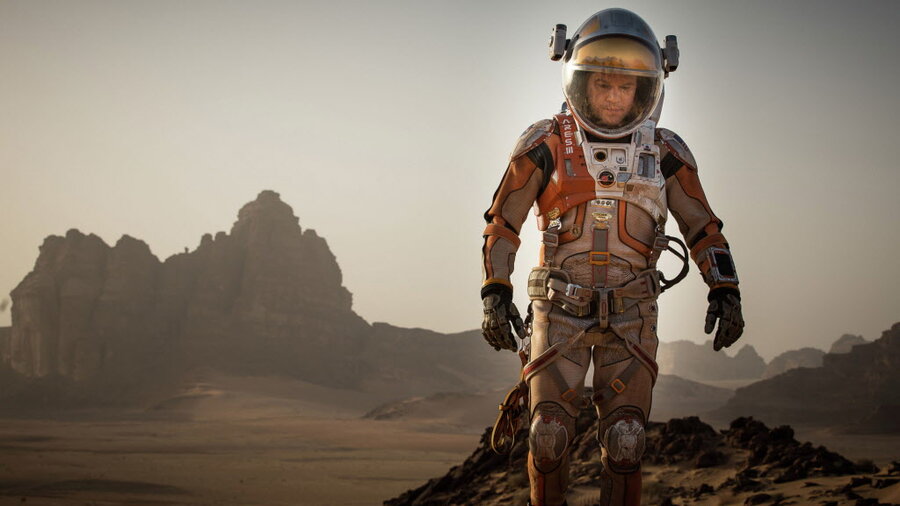Is 'The Martian' accurate? How 500 days in space would affect you.
Is “The Martian,” the upcoming science-fiction film from noted director Ridley Scott ("Aliens," "Prometheus"), scientifically accurate? The answer is yes.
"Martian" centers on NASA astronaut Mark Watney, who becomes stranded on Mars after he is presumed dead by his crew mates and left behind on the Red Planet.
Filmed over the course of 70 days in Budapest, Hungary, the film worked to ensure that it followed NASA protocol, from Mark’s rover to the potato crops that help him survive. One of the movie’s most striking features, however, is how deeply it dives into the psychological impact of long-term isolation.
“I’m the first person to be alone on a planet,” Mark (Matt Damon) says partway through the movie. “400 billion years, and then there’s me.” Not only is Watney separated from the rest of humanity, but forced to scrape by on whatever resources he can find or improvise.
Rather than retreating into a dour procedural, however, the movie presents his isolation as an opportunity: Watney is forced to figure out how to survive entirely on his own. Though he may be physically alone, he is not alone psychologically; Watney narrates each course of action by checking in with cameras placed throughout the “HAB,” or habitation module, on Mars.
This is one of several aspects in the movie that conforms to NASA science. In order to prepare astronauts for long-term space missions, NASA built a HERA (Human Exploration Research Analog), a two-story habitat designed to simulate conditions of long-term missions, at the Johnson Space Center in Texas. Both the HAB that Mark lives in, and the test version that the crew on earth use to get ready for the rescue mission, look very similar to the HERA at the Johnson Center.
Also of crucial importance is the question the movie asks about the impact of Mark’s exile on the other members of his crew, both those who are on Earth at Mission Control and those who accidentally left him behind. The leader of Watney's mission, Captain Melissa Lewis (Jessica Chastain), is forced to make a tough decision: whether to return to Earth and let another mission retrieve him, or turn around and get him themselves, despite the risk for her crew and the time it would add to their mission.
In preparing for its own real-world manned missions to Mars in the 2030s, NASA is looking into how long-term space flight could affect both individuals and groups.
Research has long indicated that solitary confinement in prisons produces extremely negative effects on decision-making and emotions. This March, NASA Astronaut Scott Kelly and Russian Cosmonaut Mikhail Kornienko departed for a year in orbit aboard the International Space station, to study, among other things, the ways that long-term isolation in space affects emotional health. While the study remains ongoing, its conclusions thus far have determined that being in space for such a long period could have a negative effect on performance. NASA is interested in mitigating those effects as much as possible.
For his part, Mr. Damon spent the majority of his time alone while filming, working one-on-one with director Ridley Scott. This enabled him to dive more fully into his role, as the "contemporary version of Daniel Defoe’s Robinson Crusoe." The character's extended stay on Mars leaves him profoundly weak and emotionally fragile.
A manned mission to Mars could last two to three years, and many of the potential pitfalls remain unknown. Little is known about the long-term effects of radiation or microgravity in deep space. NASA would need to carefully prepare for psychological stresses upon the crew as well. Biosphere 2 crew member Jane Poynter and co-founder of Paragon Space Development Corporation told National Geographic that specific training would be a must for Mars mission crew members, to mitigate the effects of depression and stress caused by isolation.
One of the most important assets for a member of such a crew may be a sense of humor, something Watney has in abundance, Jason Kring of Embry-Riddle Aeronautical University told National Geographic. A person with a good sense of humor can smooth over disagreements and keep the group laughing.







